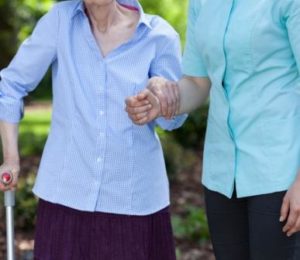
For stroke victims, rehabilitation is crucial to their recovery.
But a Flinders University study conducted in Singapore found that rehabilitation rates following discharge from hospital are poor because of gaps in the continuum of stroke care.
The study – published last month in the International Journal of Therapy and Rehabilitation – identified five major barriers to post-stroke rehabilitation in Singapore including; difficulties accessing rehabilitative services; gaps in discharge coordination; the influence of family members; discrepancies in expectation; and the perception that rehabilitation is simple.
As part of the research, interviews were conducted with 68 stroke victims who were discharged from a Singapore rehabilitation unit between December 2012 and April 2013. Of those, 31 participants reported not following recommendations to continue their rehabilitation. There was no difference in gender, age or type of stroke between those who did and not complete the rehabilitation.
Flinders Clinical Rehabilitation lecturer Dr Christopher Barr, a co-investigator of the study, said access barriers, including mobility difficulties and transport costs, along with affordability of services, were the chief obstacles precluding rehabilitation.
“The lack of transport means and the associated costs were the main barriers that hindered adherence to continuing post-stroke rehabilitation,” Dr Barr said.
“Affordability of services also had a direct influence, with one participant’s family member stating: ‘money is a concern and also who [is going] to bring my dad to therapy’,” he said.
“Gaps in the transition from hospital to outpatient services were also cited as a reason for not continuing rehabilitation – in some cases participants fell through the unnoticed gap and were left waiting for follow-up appointments.”
Dr Barr said family members were either facilitators or inhibitors of rehabilitation: “One participant said they have to prompt their mother to go because they think it’s good for her but another participant said they missed two appointments because their son forgot.
“It wasn’t uncommon for patients and carers to feel stranded and helpless.”
Dr Barr said most participants regarded rehabilitation as simple, common-sense knowledge that could easily be self-replicated or substituted without the help of a therapist, leading them to seek alternatives to their therapy recommendation.
He said the findings highlighted the need to review current goal-setting processes for rehabilitation and the need to establish a common understanding of rehabilitation practice between patients, carers and clinicians.
“Clinicians need to be more aware of their role in providing well-coordinated information about therapy, and goals need to be more patient-centred to reduce the discrepancies in expectations of rehabilitation.
“Carers also need to be more empowered and involved in discharge planning to minimise the dissatisfaction in care arrangements and information delivery.”
The study was conducted by Wei Ling Koh, a senior occupational therapist at Singapore’s Changi General Hospital and a Flinders postgraduate in Clinical Rehabilitation, along with Dr Barr and Dr Stacey George, a senior lecturer and course coordinator of Rehabilitation, Aged and Extended Care.

